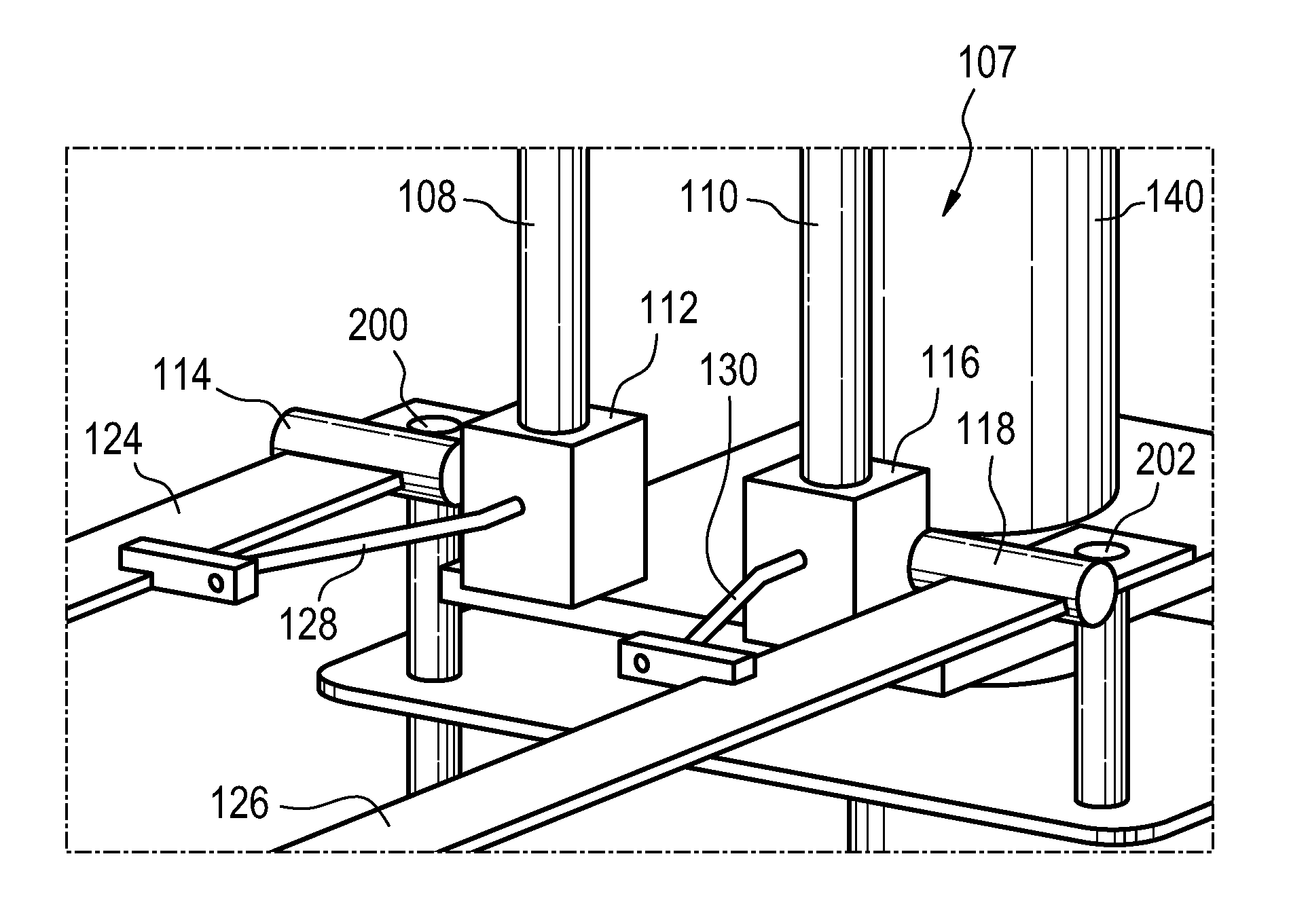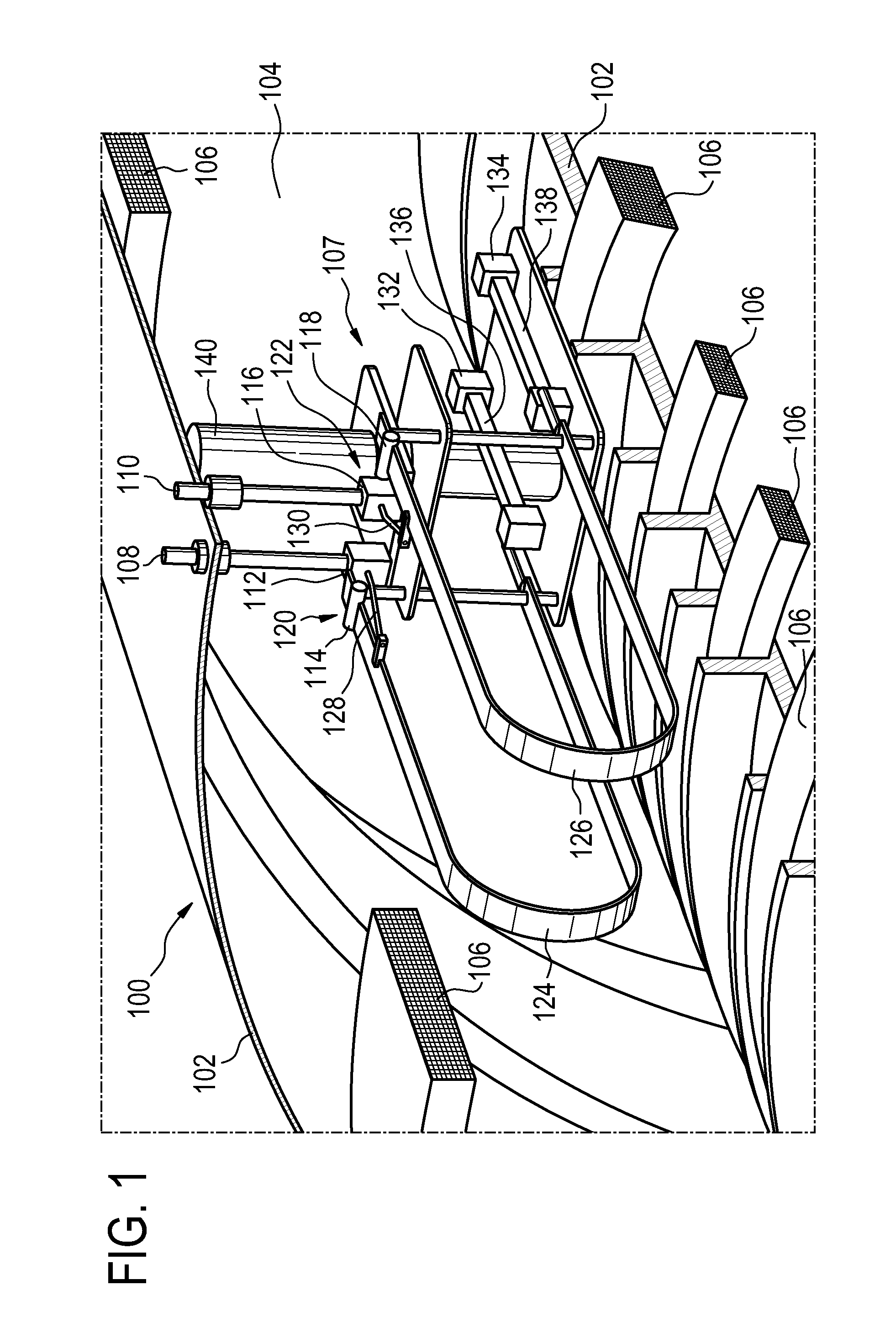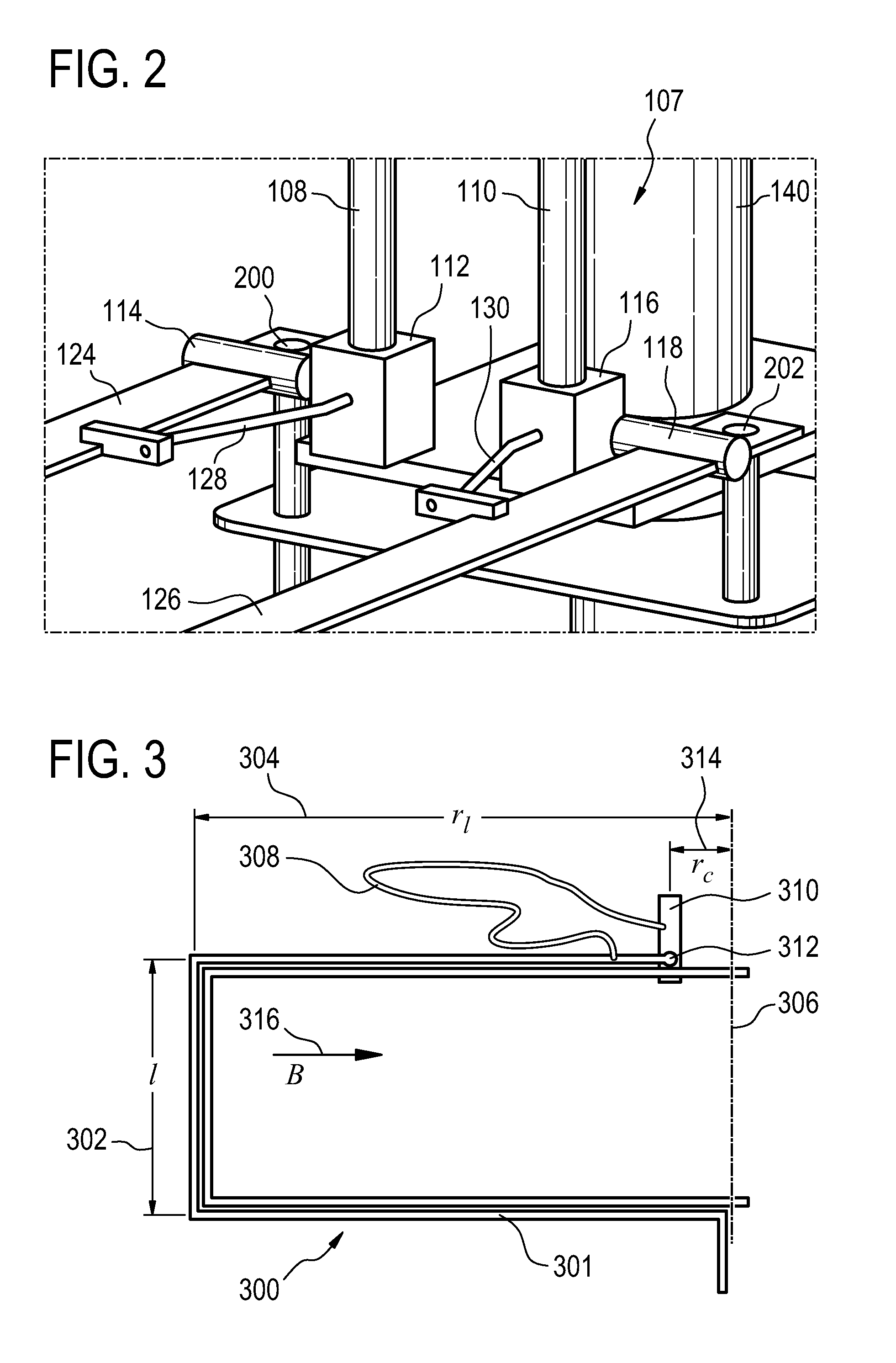Automatic current switching of current leads for superconducting magnets
a superconducting magnet and current lead technology, applied in the field of magnetic resonance imaging, can solve the problems of increasing the energy requirements of operating the superconducting magnet, and the difficulty of connecting and disconnecting the current leads from the coils of the superconducting magn
- Summary
- Abstract
- Description
- Claims
- Application Information
AI Technical Summary
Benefits of technology
Problems solved by technology
Method used
Image
Examples
Embodiment Construction
[0062]Like numbered elements in these figures are either equivalent elements or perform the same function. Elements which have been discussed previously will not necessarily be discussed in later figures if the function is equivalent.
[0063]FIG. 1 illustrates an example of a magnet 100 according to an embodiment of the invention. This is a portion of a cylindrical-type magnet. There are visible vacuum chamber walls 102. This magnet has a cylindrical-type bore in the middle. Between the walls 102 there is a vacuum chamber 104. The elements labeled 106 are portions of superconducting coils which form the magnet circuit 106.
[0064]There is a switch assembly 107 mounted within the vacuum chamber 104. There is a first current lead 108 and a second current lead 110 which go through the wall 102 and provide an electrical feed-through. The first current lead 108 is connected to a first contact 112. The second current lead 110 is connected to a third contact 116. There is a second contact 114 ...
PUM
 Login to View More
Login to View More Abstract
Description
Claims
Application Information
 Login to View More
Login to View More - R&D
- Intellectual Property
- Life Sciences
- Materials
- Tech Scout
- Unparalleled Data Quality
- Higher Quality Content
- 60% Fewer Hallucinations
Browse by: Latest US Patents, China's latest patents, Technical Efficacy Thesaurus, Application Domain, Technology Topic, Popular Technical Reports.
© 2025 PatSnap. All rights reserved.Legal|Privacy policy|Modern Slavery Act Transparency Statement|Sitemap|About US| Contact US: help@patsnap.com



